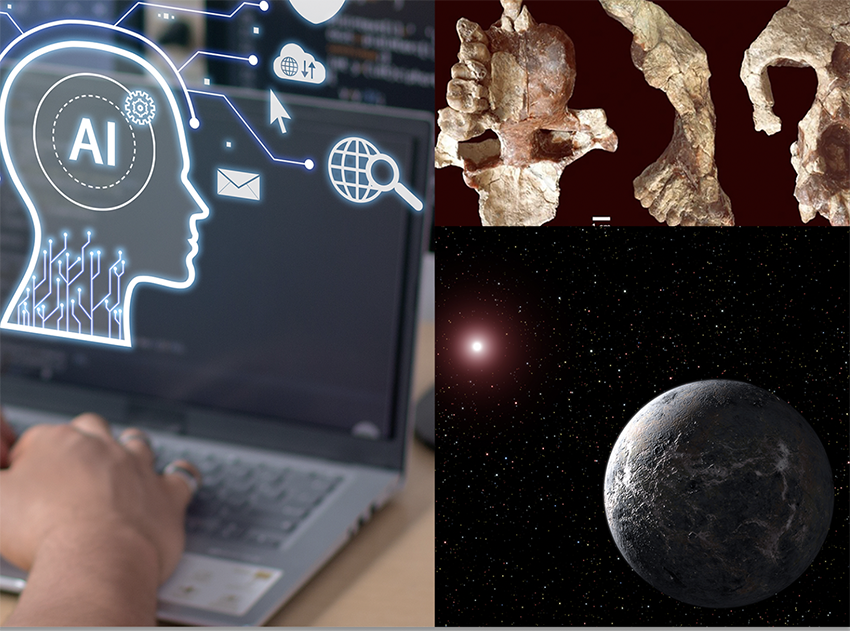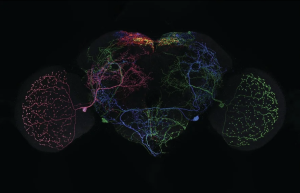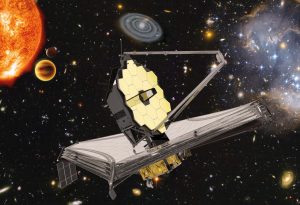
Bidding Farewell to 2023…
As technological progress accelerates, selecting the “most important scientific developments of the year” for our traditional December roundup has become a challenging task. The forefront of scientific discourse in 2023 has been dominated by space exploration, the climate crisis, artificial intelligence, and advancements in medicine.
Artificial Intelligence on The Rise
In late 2022, artificial intelligence chat with ChatGPT made a significant breakthrough in engaging with the masses, and this trend continued into 2023. Notable developments included the introduction of Google – Bard, Microsoft – Bing Chat, and the newly established Anthropic, which introduced us to Claude. Each chatbot possesses its unique strengths: while ChatGPT excels in creative writing and deductive reasoning, Bing can be utilised for internet searches, and Bard, with its new language model Gemini, demonstrates proficiency in sensible reasoning and logic. Anthropic’s Claude competes with ChatGPT in complex tasks like organising large text segments. Although ChatGPT seems to be the current leader in the group, it faces competition from newer rivals.
In December, after lengthy debates, the European Union reached an agreement on its landmark AI Act, marking a significant step in AI regulation. The UK and the US have also initiated regulatory efforts addressing the risks and precautions associated with artificial intelligence. Though effective decisions have not been made yet, these efforts are crucial for the future of AI.

In the medical field in 2023, AI showcased success as ChatGPT outperformed human doctors in responding to online medical queries in terms of quality and empathy. An AI tool successfully identified individuals at the highest risk of pancreatic cancer up to three years before diagnosis, using only patients’ medical records. AI also played a guiding role in the development of an experimental antibiotic called abaucin, proven effective against the superbug A. baumannii.
Another intriguing application of AI occurred when technology and machine learning were employed to transform an old John Lennon demo into a potentially last collaborative work of the surviving Beatles members. Paul McCartney and Ringo Starr utilized groundbreaking technology to merge a lo-fi John Lennon recording into the single “Now and Then.”
Molecular Biology Step by Step
Artificial intelligence has also made notable strides in molecular applications. In the initial quarter of the year, scientists at the University of California and the University of Washington revealed significant progress in the synthesis of proteins from scratch, utilising deep learning. By combining different artificial intelligence systems (AlphaFold2, Protein MPNN, and trRosetta), they developed modelling algorithms capable of interpreting the three-dimensional structure of proteins as a “biological language.” Consequently, these algorithms successfully generated thousands of proteins able to execute desired functions. Remarkably, these proteins are entirely novel and do not exist in the natural world. The capability to manufacture such entirely new, “tailor-made” proteins in this manner holds promising applications in combating emerging pathogens, treating diverse diseases -including cancer, creating biosensors, developing plastic-degrading enzymes, and enhancing solar cells. One notable objective is the production of nasal sprays designed to hinder the attachment of flu viruses to cells. While it is still in the early stages, researchers anticipate that, within the next 30 years, a substantial percentage of medications will incorporate proteins modelled through this innovative approach.
In 2023, alongside the milestone achievement of creating the first synthetic proteins, researchers also successfully produced the inaugural synthetic chromosome. As part of the “Sc2.0” project led by the University of Nottingham and Imperial College London, researchers synthetically engineered one of the 16 chromosomes found in baker’s yeast (Saccharomyces cerevisiae), a prominent eukaryotic organism in molecular biology and cell studies. When the group replaced one of the yeast cell’s natural chromosomes with this synthetic chromosome, the yeast demonstrated a growth with the same fitness level as a natural one.
Speaking of chromosomes, a significant breakthrough occurred as the complete sequence of the Y chromosome was finally unveiled in 2023. This small chromosome, pivotal in determining the male sex and the development of male-specific traits, had posed a formidable challenge for researchers for over two decades, primarily due to its extensive repetitive sequences.
Another noteworthy advancement in synthetic biology this year emerged with the creation of synthetic human embryos. In early 2023, American researchers announced the development of these embryos solely from stem cells, omitting the use of traditional egg or sperm cells. Later in September, Israeli scientists achieved a milestone by introducing the first full human embryo model that mimics all fundamental structures observed in the early embryo.

Also this year, a significant advancement in stem cell research marked a crucial milestone. Stem cells, renowned for their capacity to differentiate into almost any cell type, have become extensively used for therapeutic purposes. Researchers have previously succeeded in artificially reprogramming somatic cells into embryonic stem cells, but the resulting cells exhibited similarities rather than identical behaviour to true embryonic stem cells. This was attributed to the retention of biological memory from the mature cells, limiting their therapeutic potential. However, in 2023, Australian scientists introduced a groundbreaking technique known as “TNT reprogramming” that effectively erases the memory of mature cells and makes them more similar to embryonic stem cells.
All these advances, along with the groundbreaking mRNA modification technique honoured with the 2023 Nobel Prize in Physiology or Medicine, give us tremendous optimism for the future. ıt is very likely that the coming years will unveil innovative and highly effective treatments for a myriad of diseases, including cancer.
What Is Happining in The Brain
Researchers from the University of Texas have developed a “semantic brain decoder” designed to capture precise words and phrases from brain activity. The team utilised an earlier version of ChatGPT (GPT-1), training it with participants who listened to podcasts for 16 hours while inside an MRI scanner. Subsequently, the model was tested on new podcast episodes and demonstrated an ability to grasp the essence of what users were hearing or thinking, rather than providing a literal translation. For instance, when a participant heard the statement “I don’t have my driver’s licence yet,” the decoder translated it as “She has not even started to learn to drive yet.”
Decoding thoughts from brain activity was accomplished before, but with invasive electrode devices. Attempts with noninvasive systems were limited to single words or short phrases. This ground-breaking research marks the first endeavour to generate complete sentences from noninvasive brain recordings collected through functional MRI (fMRI), which scans blood flow in the brain to identify activated brain regions during specific activities. Such a brain-computer interface that can convert a person’s thoughts into words may one day assist people who have lost the ability to speak. Another group of scientists successfully managed to recreate a recognisable version of the famous Pink Floyd song “Another Brick in the Wall” by just reading the neural activity in the temporal lobe of 29 epilepsy patients (who already had invasive brain electrodes). Special computer algorithms programmed for this particular purpose look for correlations between the neural activity in the brain and the music played. However, it also raises ethical concerns regarding the use of these methods for interrogation purposes against an individual’s will.
Researchers at the Howard Hughes Medical Institute have successfully constructed the first ever “brain map” of a fruit fly larva (Drosophila melanogaster), illustrating every individual neuron and their interconnected wiring. This achievement involved compiling detailed photographs of over 74,000 fruit fly brains, showcasing the intricate structure of each neuron and the specific connections between them. This is the largest complete brain connectome (detailed diagram showing all neural connections) ever mapped. The study holds significance for scientists seeking a mechanistic understanding of how the brain functions, because scientists believe that the fundamental circuit patterns in the brain driving basic behaviours may be the same across the animal kingdom, including complex animals like large mammals.

Plastic was already detected in our guts, blood, breast milk, and placentas. A paper by University of Vienna researchers published in April 2023 has confirmed that plastic can also pass through the blood-brain barrier and accumulate in the brain. Although clues to this phenomenon were discovered two years ago, the recent study utilised computer models to validate the findings. The research revealed that nanoplastic particles smaller than 0.001 millimetres (and thus invisible to the naked eye) can cross the blood-brain barrier and travel into the brains of mice. This was observed just two hours after the mice ingested drinking water containing particles of polystyrene. The scientists also determined that the tiny plastic particles were absorbed into cholesterol molecules on the surface of the brain membrane.
Plastic particles are thought to elevate the risk of inflammation and neurological disorders (including neurodegenerative diseases such as Alzheimer’s or Parkinson’s), and also induce short-term health effects, including cognitive impairment and neurotoxicity. The gastrointestinal barrier is also susceptible to nanoplastic interference, leading to inflammatory and immune reactions in the gut.
Beyond The Boundaries of Our Planet
In recent years, scientists have made significant strides in enhancing the techniques employed to discover worlds beyond our solar system, resulting in the detection of hundreds of new worlds. As of 2023, the tally of confirmed exoplanets (planets orbiting stars other than the Sun) has surged to 5,539, with an additional 10,000 candidates currently under investigation. While the majority of these exoplanets reside within the Milky Way, researchers posit that they have also identified the first planet in another galaxy two years ago.
In the preceding year, a ground-breaking discovery marked the first identification of a radiation belt encircling an exoplanet. This milestone was achieved through the acquisition of high-resolution images, utilising the coordinated efforts of 39 radio telescope antennas spanning from Hawaii to Germany. Planets boasting robust magnetic fields generate a protective “magnetosphere,” capturing high-energy electrons and engendering radiation belts teeming with high-energy particles. The unearthing of the belt enveloping LSR J1835+3259 represents a pivotal advancement in comprehending exoplanetary magnetic fields and deciphering forthcoming data. Notably, the luminosity of this radiation belt is astonishing 10 million times that of Jupiter. Although the origin of the electrons remains partially elusive, the hypothesis of a volcanic satellite appears plausible. These revelations furnish researchers with vital insights into unravelling the life narratives of exoplanets.
Recognising and studying exoplanets has become much easier with the James Webb infrared space observatory. The space telescope, spending about a quarter of its time studying exoplanets, allows us to understand what is in the atmosphere of another planet and can tell us a lot about that world, including whether it would be habitable. Among the planets discovered, there are some very interesting findings, such as one orbiting two stars like in Star Wars, one with high clouds decorated with Quartz crystals, and another, whose metallic clouds reflect 80% of the starlight and making it “the brightest known celestial body”. The number of Earth-like exoplanets with hints of life beyond the solar system is also increasing.

In 2023, NASA’s James Webb Space Telescope also made the discovery of a carbon compound (methyl cation, CH3+) that had never been seen before in space. This molecule is important in the formation of more complex carbon-based compounds and forms the building blocks of life as we know it. The discovery, published in Nature, was made in a young star system called d203-506 in the Orion Nebula, 1,350 light-years from Earth. Interestingly, although the star in this system is a small red dwarf, it receives intense ultraviolet (UV) light from nearby massive stars. Despite the belief that UV radiation destroys complex organic molecules, in this scenario, the team suggests that UV radiation may actually help the formation of CH3+. CH3+ in turn promotes the emergence of more complex organic molecules. So UV radiation may have played an important role in the early stages of the chemical origins of life. Since carbon compounds are essential for life, the discovery is important for scientists to understand the development of life in the universe.
NASA’s OSIRIS-REx spacecraft managed to bring samples collected from the asteroid Bennu back to Earth after a 7-year mission. The rock and soil samples are the first asteroid fragments NASA has brought back to Earth and the largest amount of material ever collected from a space rock. Previously, Japan’s Hayabusa and Hayabusa2 missions collected and returned much smaller samples from two separate asteroids. The 250 grams of asteroid dust collected by OSIRIS-REx is almost four times the amount predicted by NASA. Initial analysis of the samples revealed hydrated clay minerals containing carbon. The research could provide important data on how water came to Earth and how life formed on planets.
Also this year, in April, the European Space Agency ESA’s JUICE (JUpiter ICy moon Explorer) spacecraft was launched to begin its 8-year journey to Jupiter. The spacecraft will use remote sensing, geophysics and in situ observation instruments to study the giant gas planet itself and its three large moons Ganymede, Callisto and Europa, which have oceans on their surface. The mission will evaluate these moons as both planetary objects and possible habitats, explore Jupiter’s complex environment in depth, and study the entire Jupiter system as a model for gas giants in the universe.
Another exciting progress was made by India when the Chandrayaan-3 spacecraft, the third lunar mission by the Indian Space Research Organization (ISRO), successfully soft landed on the South Pole of the Moon, where no other country ventured to explore before. With this landing, India became the fourth nation to successfully achieve a soft landing on the lunar surface, and the first to land on its South Pole -a region of particular interest due to its presumed abundance of frozen water and valuable elements.
The Environment is Worth Fighting For
It looks like 2023 is shaping up to be another year in which environmental records are broken, and maintaining a positive outlook becomes increasingly challenging. Ironically, the 28th Conference of the Parties (COP 28) was convened in Dubai this year, and the conclusions are not very surprising. Even though we have witnessed a call for “turning away from fossil fuels” for the first time during such an event, as well as a collective plea for the expansion of renewable energy systems, the reduction of coal-burning power plants, a fair transition to clean energy systems and the elimination of government subsidies for fossil fuel-based systems, parties were granted extensive discretion on when, how, and to what extent they should curtail greenhouse gas emissions to align with both the UN Climate Change Framework Convention and the Paris Agreement.
Putting politics aside, some climate scientists are still optimistic about the possibility of constraining global warming within the 1.5°C threshold. According to scientists from Oregon University, the summer months of 2023 broke records as the hottest in history, with average temperatures exceeding pre-industrial levels for 38 consecutive days. Meanwhile, the expansion of the Antarctic ice sheet reached unprecedented lows, annual coal consumption was the highest in history during 2022 and all the while, humanity has given minimal effort to combat the climate crisis.
Our oceans are warming at unprecedented rates. Ocean temperatures along the East Coast of the United States of America are 13.8°C above the 1981-2011 averages. The average water surface temperature has risen by 0.9°C since the pre-industrial era. As oceans warm, their heat holding capacity is severed and this heat may dissipate back to the atmosphere, adding to the positive feedback loop that could further warm the planet.
Polar glaciers continue to melt at an alarming pace, reminiscent of disaster scenarios from popular culture. Analysis of satellite imagery and historical scientific photographs, researchers have concluded that Greenland’s ice sheets are melting five times faster than in the last two decades. The potential consequences of a complete meltdown, including a global sea level rise of six metres, are dire. A parallel situation is unfolding in the southern hemisphere, where surveys conducted on September 10, 2023, reveal that the maximum annual extent of the Antarctic ice sheet area reached 16.96 million square kilometres—only about 10 million square kilometres smaller than the previous low record set in 1986. This indicates a significant reduction in the growth of the Antarctic ice sheet during winter months.
We have been witnessing floods in the coastal towns quite often recently. This obviously has something to do with urban planning problems, but we cannot deny the effects of the climate crisis. Beyond directly affecting human habitats, the climate crisis is causing many problems for ecosystems. Warming oceans will witness a decline in dissolved oxygen levels, an increase in acidity, and adverse effects on marine biology. The loss of glaciers in Hindu Kush – Himalayan Mountain Range will trigger extreme weather events and increased flooding in lower plains, devastating many industries, including agriculture, causing serious problems for human settlements. As annual average temperatures rise, terrestrial life will have to adapt to this change. The ones that cannot, especially plants with their inherent immobility, will be affected the most. (Bad news for coffee lovers!) Disruption of photosynthetic processes in tropical trees are already being observed. Leaves of tropical trees stop photosynthesis above 46.7°C . Besides plants, there is extensive research on negative impacts of rising temperatures on insects, fish, reptiles, amphibians and birds. In short, unless we tailor our actions to the challenges at hand, the future may bring warmer days where even our clothing needs may diminish.
Humanity’s Origins
In 2023, significant developments have been made in the realms of ancient DNA and palaeoanthropology research. New fossils found in Europe and Anatolia have bolstered a compelling theory challenging the conventional narrative that modern humans originated in Africa before dispersing elsewhere. Instead, but actually appeared in Europe and Eastern Mediterranean and then migrated to Africa. Fossilised skull fragments found in Çorakyerler-Çankırı, a site renowned for its abundant fossil deposits, belonging to Anadoluvius turkae, shed light on our hominid ancestors that lived 8.7 million years ago. In comparison, the famous Australopithecus afarensis fossil (better known as “Lucy”) found in Ethiopia in 1974, dates back to 3.2 million years ago.
Advancements in genetic analysis techniques have propelled ancient DNA (aDNA) research to new heights. Since the scientists sequenced an ancient genome for the first time in 2010, we have made a number of novel discoveries about the lives of our ancestors. For example, genetic analysis has uncovered the prevalence of unpleasant viral infections, such as Herpes and Epstein-Barr, among our ancestors. Also, according to ancient DNA analysis of a bone necklace found in a residential cave of Palaeolithic origin, we know that the person who wore this necklace was a woman with ancestral ties to Northern Eurasian populations.
We can shed more light on the agricultural revolution of the Neolithic Age, the age when our ancestors transitioned to sedentary lifestyles from hunting-gathering practices, with help of genetic research. Despite being a cornerstone of modern life, the agricultural revolution remains a subject of ongoing debate. Recent research has added a new dimension to this discourse. Analysing genome data of the people from three important Neolithic settlements in Northwest Africa, researchers have claimed that the change which occurred in this region around 7.400 years ago began with the arrival of farmers migrating from Europe. So, the evidence challenges existing theories, suggesting that during the agricultural revolution, Neolithic communities not only migrated from Anatolia to East Africa via the Middle East but also traversed from Anatolia to Europe and subsequently to West Africa through Gibraltar. These archaeological findings that became only possible with the help of genetic technology, and future discoveries, may even require us to rewrite human history.
REFERENCES
- 1. https://www.nasa.gov/universe/webb-makes-first-detection-of-crucial-carbon-molecule/
- 2. https://mashable.com/article/planets-exoplanets-discovery-2023
- 3. https://www.nasa.gov/news-release/nasas-bennu-asteroid-sample-contains-carbon-water/
- 4. https://www.esa.int/Science_Exploration/Space_Science/Juice
- 5. https://www.consilium.europa.eu/en/press/press-releases/2023/12/09/artificial-intelligence-act-council-and-parliament-strike-a-deal-on-the-first-worldwide-rules-for-ai/
- 6. https://news.mit.edu/2023/generative-ai-imagines-new-protein-structures-0712
- 7. https://www.theguardian.com/commentisfree/2023/may/01/plastic-is-already-in-blood-breast-milk-and-placentas-now-it-may-be-in-our-brains
- 8. https://www.scientificamerican.com/article/see-an-amazingly-detailed-map-of-the-fruit-fly-brain/
- 9. https://www.technologyreview.com/2023/05/01/1072471/brain-scans-can-translate-a-persons-thoughts-into-words/
- 10. https://www.sciencealert.com/scientists-recreate-classic-pink-floyd-track-from-the-brains-of-listeners
- 11. https://www.climate.gov/news-features/event-tracker/2023-antarctic-sea-ice-winter-maximum-lowest-record-wide-margin
- 12. https://news.un.org/en/story/2023/12/1144742
